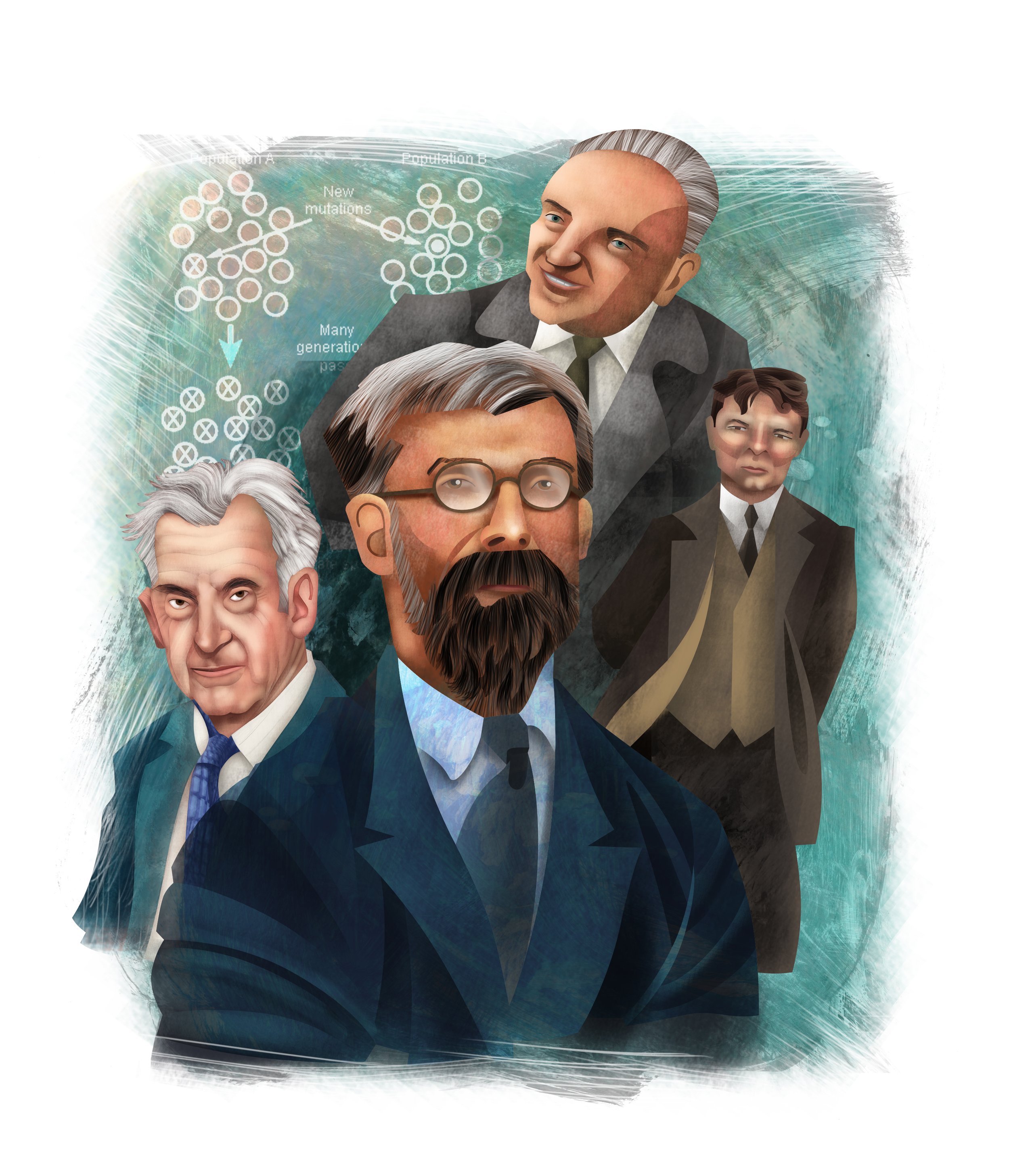Ronald Fisher (1890-1962), Sewall Wright (1889-1988), Theodosius Dobzhansky (1900-1975) and Ernst Mayr (1904-2005)
Recognized as the authors of Neo-Darwinism, or the modern synthesis, Fisher, Wright, Dobzhansky, and Mayr formulated the theory of evolution as we know it today.
Before 1920, the mechanisms behind evolution were unknown. Genes, DNA, and mutations were still undiscovered. It was not understood why variations between populations of the same species existed. Darwin saw these variations in his pigeons and barnacles. We now understand that differences in DNA sequences cause these variations in a population.
The statistician Ronald Fisher and the geneticist Sewall Wright integrated Mendel’s genetic work into Darwin’s theory of natural selection in the 1920s, placing Darwin’s theory on much more solid ground. Fisher demonstrated that natural selection leads to the accumulation of small changes over time, not large ones, as had been previously assumed.
The publication in 1937 of Theodosius Dobzhansky’s book Genetics and the Origin of Species represented a significant advance in the study of evolution and genetics. Dobzhansky, a Soviet émigré living in the United States, worked with Drosophila, a type of fruit fly. He identified several differences in their chromosomes using a microscope.
Ernst Mayr, inspired by Dobzhansky’s book, studied the birds of Papua New Guinea. He concluded that the variation he observed among the different populations was due to the flow of genes from one population to another.
By 1940, the architects of the modern synthesis demonstrated that genetics, zoology, and paleontology all told the same story. Mutations were the source of evolutionary change. New species resulted from a combination of Mendelian laws, genetic drift, natural selection, and geographic isolation. Such transformations were reflected in the fossil record over millions of years. The success of the modern synthesis, also known as Neo-Darwinism, is the driving force behind the research of the last 70 years.
To understand evolution, we must indeed look to Darwin. However, he was not the first to wonder about the origin of living things, nor was he the last to discover evidence for evolution. Furthermore, Darwin was not privy to much of the information we take for granted today. Imagine if he were alive today. He could use a compound light microscope to magnify a specimen up to 2,000 times larger. He could magnify a specimen up to 10 million times more with an electron microscope. He could learn about Mendelian genetics, genes, and the structure of DNA. He could see for himself the enormous number of fossils found to date. He would be shocked to learn the Earth’s actual age and delighted by the techniques used to calculate the age of rocks. Our understanding of plate tectonics would leave him breathless. What would Darwin have given to live in our era, with our access to 21st-century technology and knowledge?
Ernst Mayer, Ronald Fisher, Sewall Wright, and Theodosius Dobzhansky tied Darwin and Russel Wallace’s theory of evolution with Mendelian genetics.



